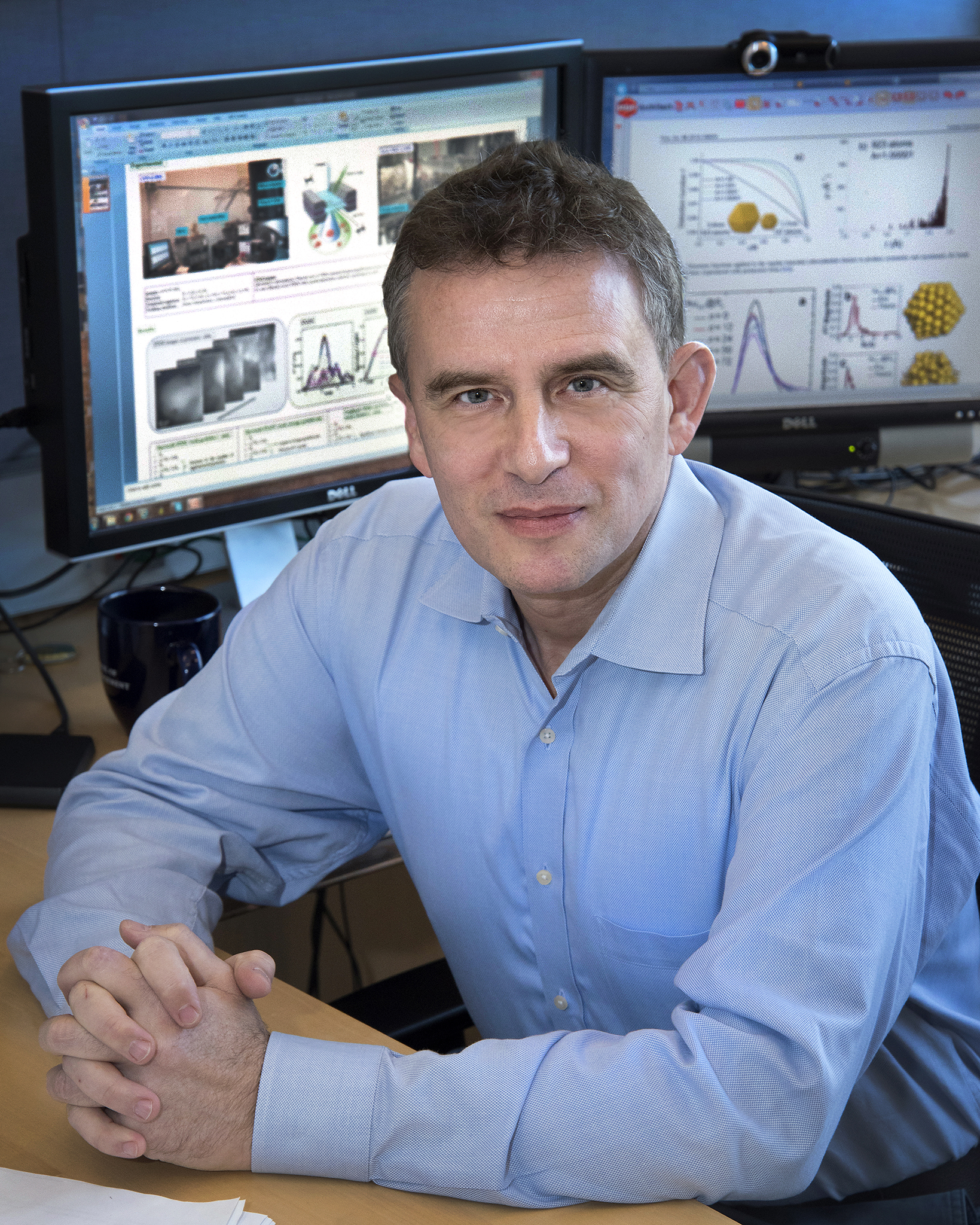Materials Science and Chemical Engineering Professor shares how AI Supports Research
 The emerging application of artificial intelligence (AI) to a diverse range of fields has positioned it as a valuable research tool. Stony Brook’s AI Institute contains affiliate faculty from a wide variety of disciplines who are using machine learning to advance their research.
The emerging application of artificial intelligence (AI) to a diverse range of fields has positioned it as a valuable research tool. Stony Brook’s AI Institute contains affiliate faculty from a wide variety of disciplines who are using machine learning to advance their research.
In this, the first of our AI Researcher Profiles, we spoke to Professor Anatoly Frenkel of the Department of Materials Science and Chemical Engineering in the College of Engineering and Applied Sciences to learn how his research is benefitting from the use of AI and machine learning.
AI Institute: How do AI and machine learning fit into the Materials Science and Chemical Engineering (MSCE) areas of study and research?
Anatoly Frenkel: The use of AI in general and machine learning in particular to MSCE areas is rapidly growing. The use of machine learning extends from training theoretical calculations that are fast and inexpensive to achieve similar results as traditional, but much slower and computer-resource-consuming, methods such as first principle calculations. These calculations are vital to understand dynamics and kinetics of catalytic reactions, one of the primary objectives in chemical engineering.
There are many research directions that rely on machine learning. For example, we developed machine-learning-assisted methods aimed at extracting materials' properties from their experimental spectra. As Francis Crick (the co-discoverer of a double helix structure of the DNA molecule) once said: "If you want to understand the function, study structure." We paraphrase it to: "If you want to understand structure, study spectrum." The problem is particularly important in the realm of nanoscience, that the structural information is encoded in the spectra in a non-transparent way. It is much easier to simulate the spectrum by starting from a known or assumed structure than to solve an inverse problem (given the spectrum, obtain structure). For scientists dealing with rational design of new materials, it is the second question that is by far the most important one. We are working on answering it -- and developing methodology for solving the structure from spectra in a broad range of nanoscale materials.
AI: What are the next steps for your machine-learning-assisted methods?
AF: We have a non-provisional patent application on the direction that our group developed (inverting experimental spectra to obtain materials structure and property). We hope that it will be useful in many areas of materials research, ranging from data analysis while an instrument collects the data in real time, to helping run chemical reactions "on demand," that is, relying on AI to adjust reactor parameters for improving activity, selectivity or stability of the catalyst.
AI: What do you see as future applications of AI and AI-related technology as it applies to your fields of research?
AF: There is another aspect in our work: the very goal toward rational design (as opposed by trial and error) of new materials is still a pipe dream. At present, there is a lack of general knowledge of how to discover design rules that target not just a certain structure or property in a new material, but a specific function such as designing a catalyst with desired selectivity to a particular product. That is a hugely important problem to solve. We believe that the machine-learning-based methods we are working on can help unlock these elusive design rules. We are starting with a specific class of such materials: the size-controlled nanoparticles and single atom catalysts.
AI: Do you think that students in your field should take AI-related classes and expose themselves to more AI-related technology?
AF: Yes, it helped tremendously that the students working in my group are exposed to AI classes as part of their graduate and, ideally, undergraduate curriculum.
AI: Thank you for your time, Professor Frenkel.
About the Researcher
Anatoly I. Frenkel is a Professor in the Department of Materials Science and Chemical Engineering at Stony Brook University. He is an Affiliate Faculty member of the AI Institute. He is also affiliated with the Institute of Advanced Computational Science, and has a joint appointment as a Senior Chemist at Brookhaven National Laboratory.
His research interests include:
- Physico-chemical properties of nanomaterials
- Structure-property-function relationships in applied nanomaterials
- Mechanisms of work of catalysts, electromechanical and novel filtration materials, quantum dots and batteries
- Development of machine learning methods for materials research and discovery
- Development of synchrotron-based techniques in materials characterization
- Development of in situ/operando techniques for studies of functional nanomaterials

